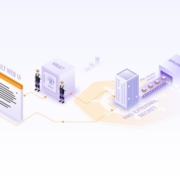Rightsizing resource requests is an increasing challenge for teams using Kubernetes—and especially critical as they scale their environments. Overprovisioning CPU and memory lead to costly overspending, but underprovisioning risks CPU throttling and out-of-memory errors if requested resources aren’t sufficient. Dev and engineering teams that don’t thoroughly understand the live performance profile of their containers will usually play it safe and request vastly more CPU and memory resources than required, often with significant budget waste.
The open source Kubecost tool (https://github.com/kubecost) has had a Request Sizing dashboard to help Kubernetes users bring more cost efficiency to their resource requests. One of the tool’s most popular optimization features, the dashboard identifies over-requested resources, offers recommendations for appropriate per-container resource requests, and estimates the cost-savings impact of implementing those recommendations. The dashboard utilizes actual usage data from live containers to provide accurate recommendations. However, leveraging the dashboard has included some hurdles, requiring users to manually update YAML requests to align resource requests with Kubecost recommendations or introduce integrations using a CD tool.










